Submitted by WA Contents
Barberio Colella ARC + Angelo Figliola design Bamboo Office for a new green district in Changzhou
China Architecture News - Apr 24, 2019 - 04:26 16474 views

Barberio Colella ARC and Angelo Figliola design have released their proposal for a new bamboo office for a new green district in Changzhou, China. The award-winning proposal features a double-skin facade surrounded by 15 meters-tall bamboo plants in order to optimize the bioclimatic behavior of the building and reconnect employees with nature while working.
Dubbed as Bamboo Office, the project is one of the winners of the "1st International Design Building Competition", promoted by the "Chinese Sustainable Design Centre" and the "China New Building Materials Design & Research Institute".
Barberio Colella ARC, in collaboration with Angelo Figliola, has proposed a green design scheme in which architectural, bioclimatic and environmental aspects converge.

"The main goal of the design is to connect future employers with nature. This means that people inside the building can constantly perceive the passage of time and the flow of seasons during the year. In this way, who works inside the building or visits it can feel the synergistic relationship between architecture and nature," said Barberio Colella ARC in its project description.
"This object is pursued thanks to different architectural and natural devices. First, a double skin facade, which allows the optimal bioclimatic behaviour of the building during the different seasons, permitting the heat to enter during the summer and the cool air to penetrate inside the building in a passive manner, using benefits of natural ventilation."
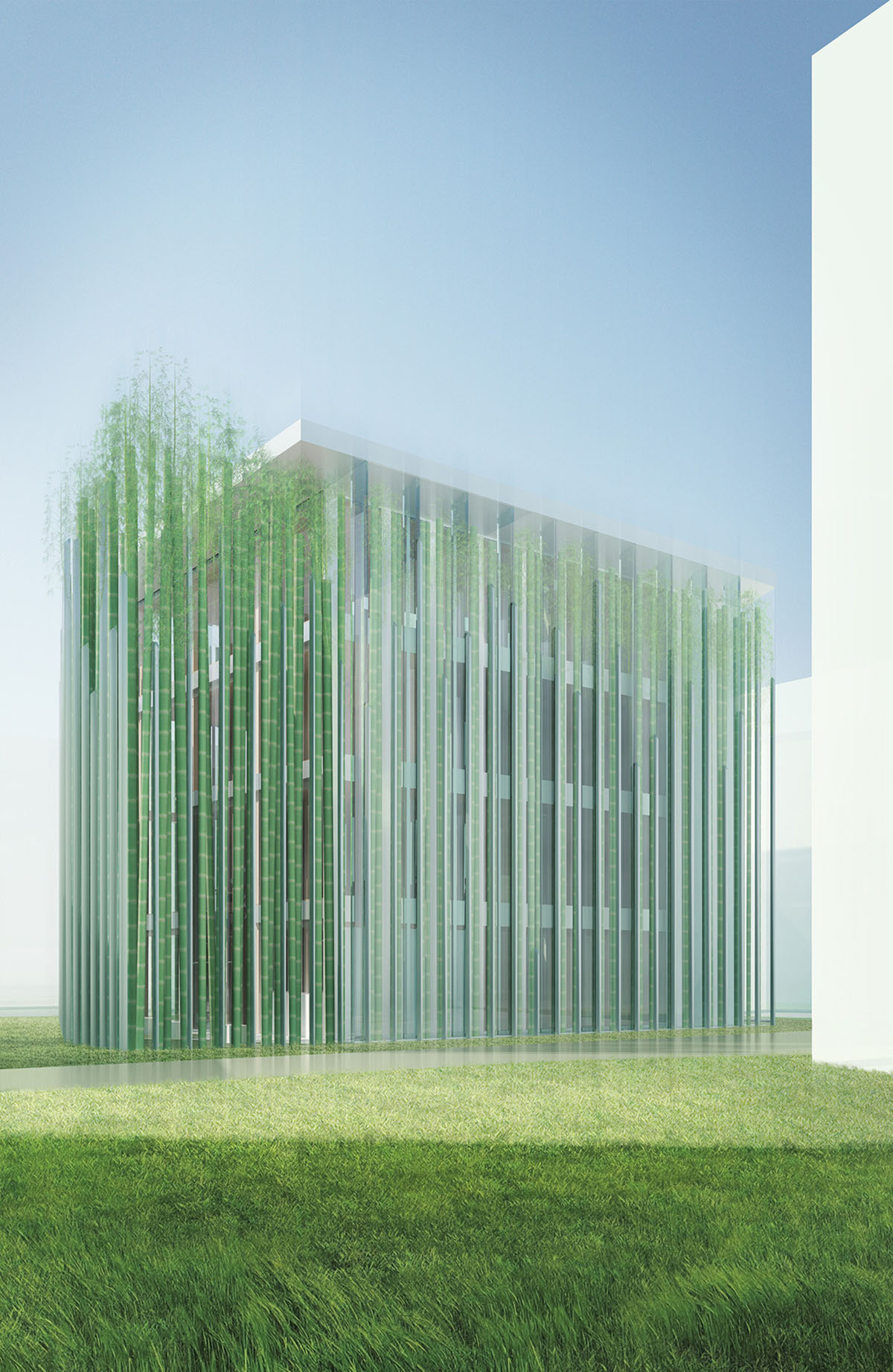
Inside the double skin facade, there is the "bamboo line", which consents to control and optimize the glare amount, while permits the light to enter inside the building a diffuse way.
The bamboo line also creates all around the building the sensation to work surrounded by nature, potentially reaching the maximum level of mental and physical comfort.
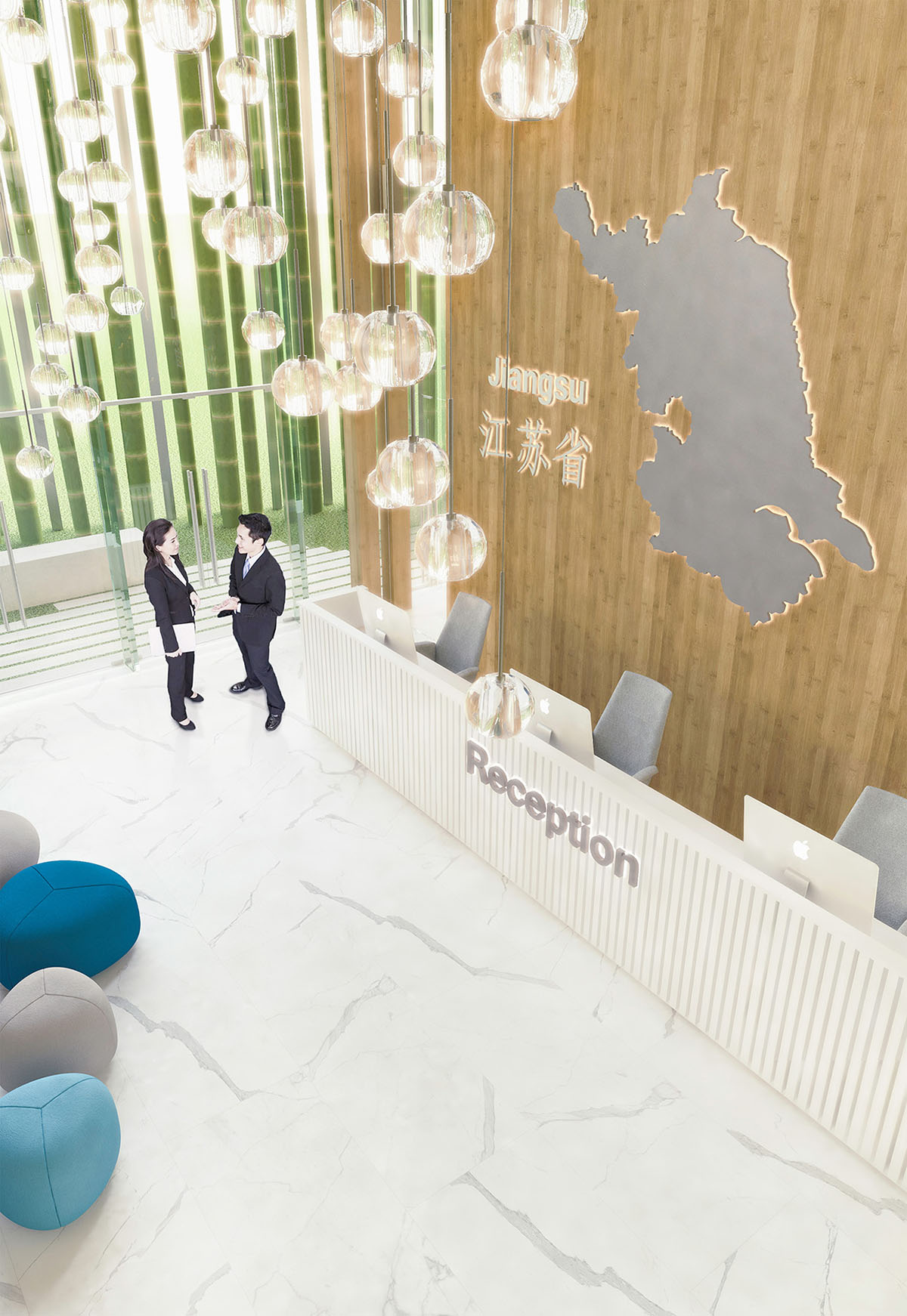
Plus, an "inner green space" permits employers and visitors to live the green space not only inside the building but also outside it, creating an outdoor lounge area. This area is surrounded by high bamboo plants which shades the South side of the building during the summer, protecting the same from wind during the winter.
The building is able to control the environmental conditions by virtue of its morphological, distributive and dimensional characteristics: the use of a bamboo shading system to protect the transparent walls avoids overheating of the surfaces exposed to the east, west and south but at the same time guarantees a supply of energy important passive solar system; the double skin façade guarantees an optimal distribution of natural ventilation while the use of a massive and well insulated envelope on the north side is able to guarantee a high standard of performance in order to reduce the energy demand.
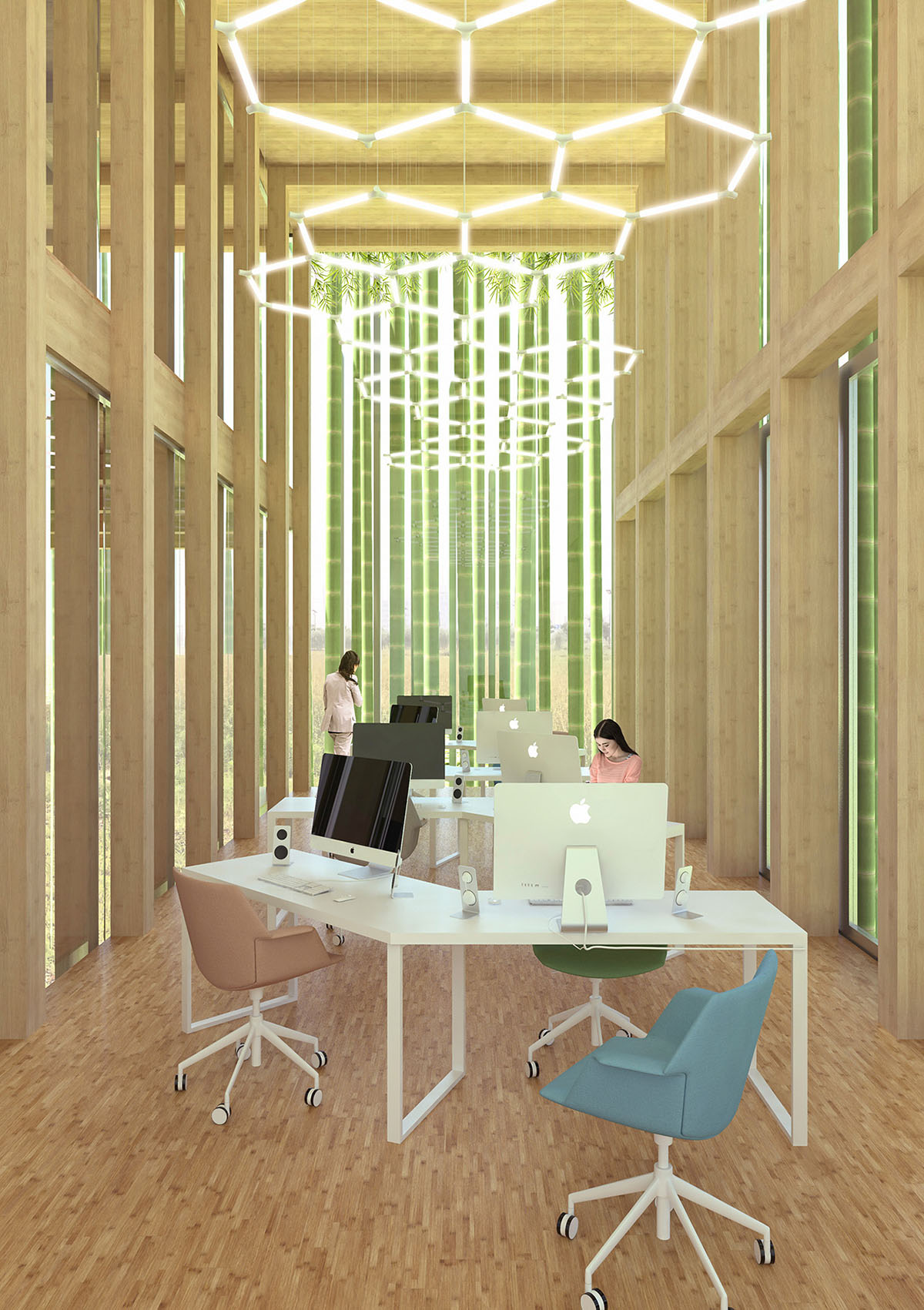
The morphology and the planimetric layout of the building makes it possible to obtain substantial advantages during the winter period for the areas of greatest daily use, such as good natural lighting and a high solar thermal gain. At the same time the low percentage of openings and transparent walls facing north can mitigate the action of the cold and intense winds coming from the north side.
The whole structure is conceived by using glued laminated bamboo beam and columns with metal hidden connections, allowing the aware use of local resources (engineered bamboo) reaching a high level of sustainability also in the use of natural an recyclable materials.
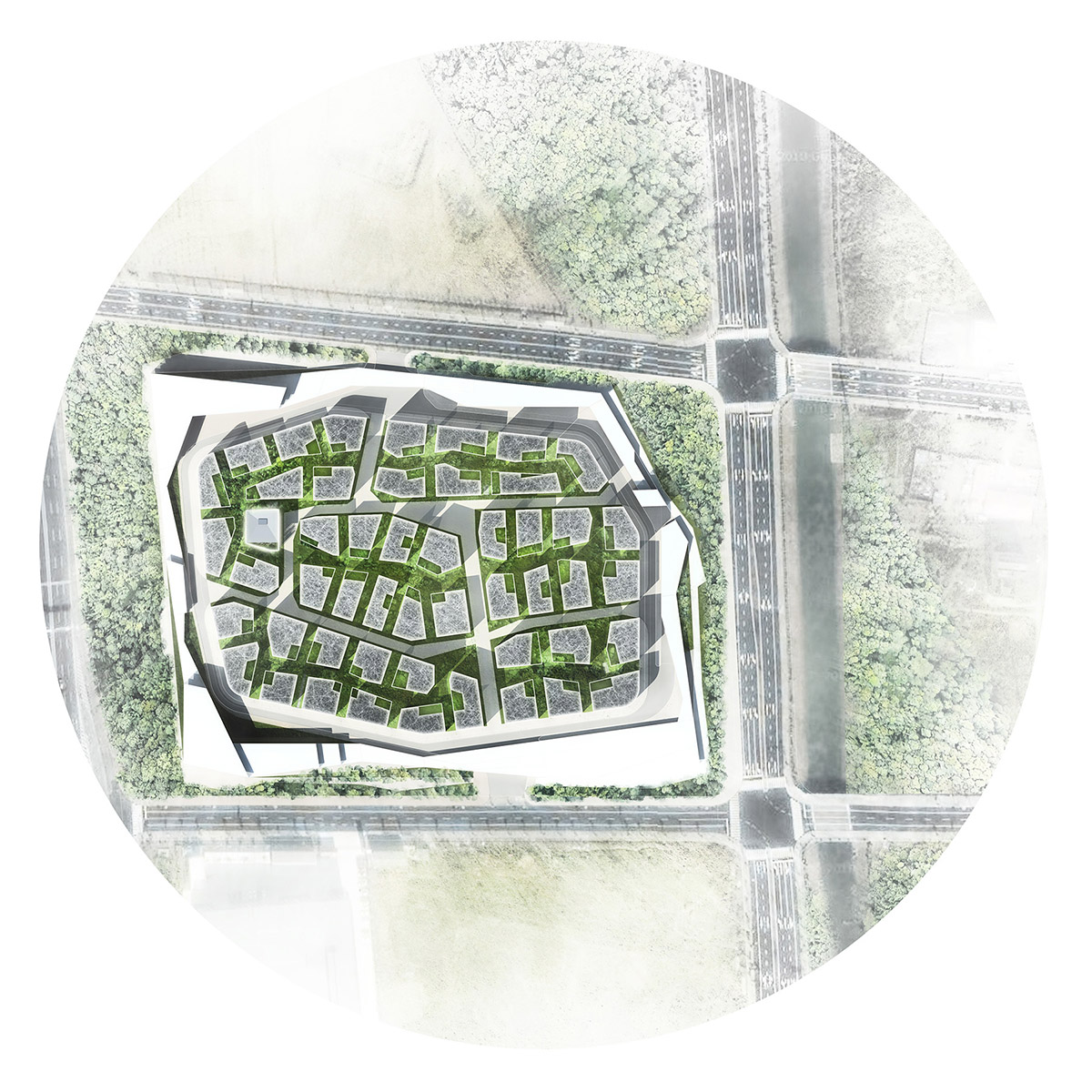
Masterplan
The building program features a reception area, characterized by double-height space and a big curtain wall, an exhibition area, a bookshop, open space offices, meeting rooms, a lounge space with kitchen, private and executive offices and a conference hall. The rooftop is designed to collect rainwater for recycling purposes and it is covered by photovoltaic film on the whole surfaces.
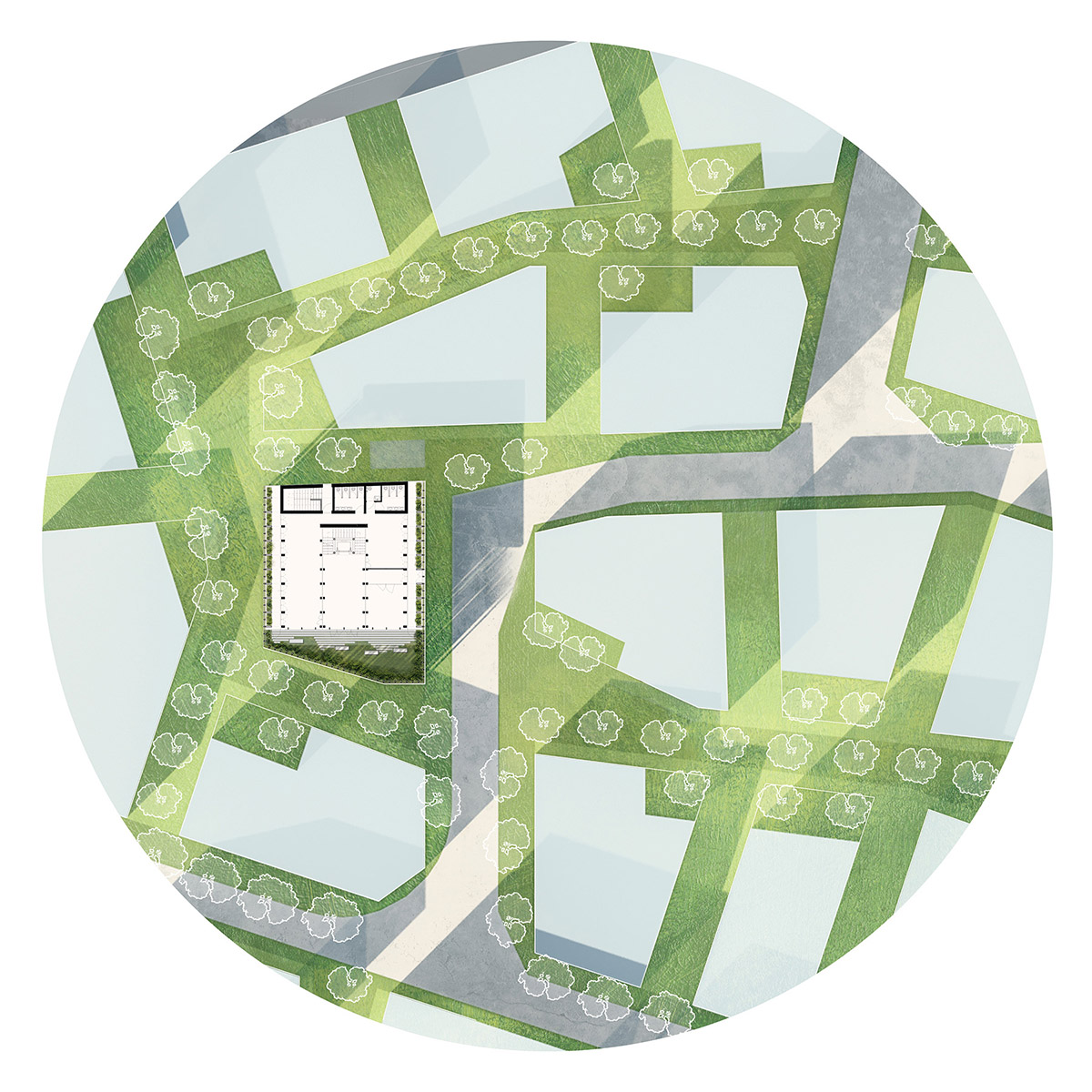
Site plan
The building is part of a masterplan developed by the Chinese Institutions in which participants has been invited to design green buildings in order to showcase a new sustainable era for the future of China.
The whole area is located in the green building industry cluster demonstration district of Wujin District, Changzhou. Wujin green building industry cluster demonstration district is the only national green building industry cluster demonstration district established by Ministry of Housing and Urban-Rural Development.
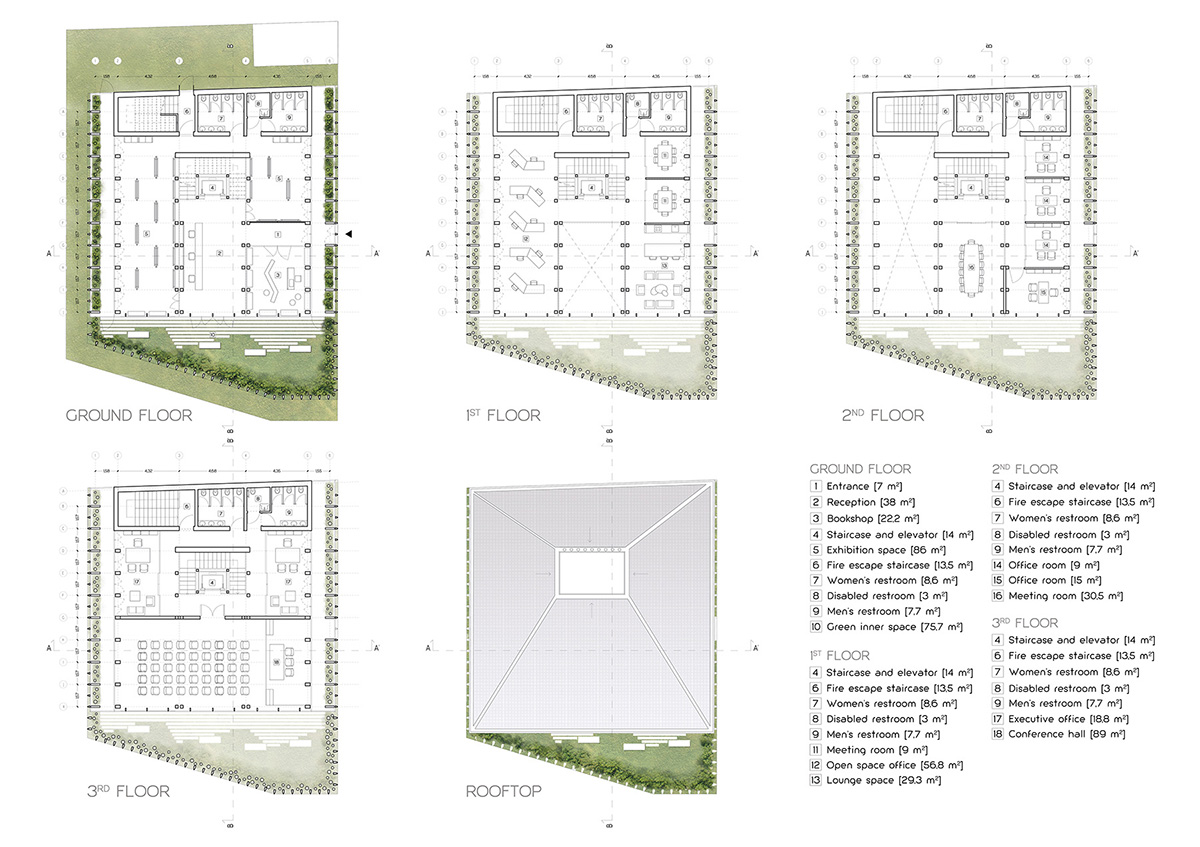
Plans
It’s a new experimental mode to explore the green building industry development, to create a sustainable pattern of city, to promote sustainable lifestyle. The demonstration district contains: modern service area for green building industry, sustainable residence demonstration area, green building materials industrial park, energy-saving and environmental friendly facility park, green building industrialization park and green building international exchange park. The construction of all the winning entries will start after the follow-up technical meeting in the next few months.

Bioclimatic strategies

Elevation and sections
Project facts
Architectural Design and Structural Design: Barberio Colella ARC (Maurizio Barberio and Micaela Colella)
Enviromental Design and Analysis: Angelo Figliola
All images courtesy of Barberio Colella ARC
> via Barberio Colella ARC
